A batting average of 50 is considered to be the hallmark of a great batsman. The ‘50-Club’ is a pretty exclusive one with plenty of great batsmen spread across generations. Similarly, for bowlers, a bowling average below 25 is considered to be the gateway to the hall of legends. Now, there have been plenty of cricketers who fit neither criteria and still have been stalwarts and match-winners for their respective sides. This article is an attempt to recognize some of them.In picking this team, I will go with the standard accepted formula of 5 batsmen, one all-rounder, one wicketkeeper-batsman and 4 specialist bowlers. I am assuming that the match will be played on an ideal Test match wicket which has something for all types of cricketers and, most importantly, good bounce.I will also only pick players who have played after the advent of television in order to get a proper perspective of their game (my apologies to a host of great cricketers like Rohan Kanhai, Neil Harvey, Frank Worrell, Bob Simpson, Arthur Morris, Stan Mccabe and so on).
#1 Virender Sehwag
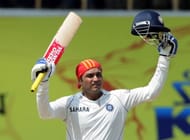
Virender Sehwag – The man who redefined opening in Test matches. He made huge scores and made them fast. The owner of the record for the fastest 300 and the instigator of some of the most stunning assaults in Test match history. He averaged 49 and scored at strike-rate of 82. If any criticism could be levied on Sehwag, it would be about his lack of footwork that troubled him later in his career in overseas Test matches. However, as brutal Test hundreds in Johannesburg, Adelaide and Melbourne show, Sehwag on his day is capable of slaughtering anyone and everyone.
#2 Gordon Greenidge
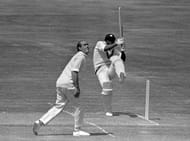
Gordon Greenidge was a giant in every sense. Blessed with a formidable technique honed over years of fending off the new ball for Hampshire, he also had a magnificient array of strokes to call upon. Most importantly, he had an aura around him that made all bowlers wary. His legendary partnership with Desmond Haynes was the platform for many a West Indian truimph. His most famous knocks include an incredible 134 in Old Trafford (England made 71 and 126 in their 2 innings of the test match), the seminal 214 at Lord’s and the blistering 226 against the Aussies in his penultimate Test. His partnership with Sehwag is surely one that would make cricket enthusiasts impatient with anticipation
#3 Martin Crowe
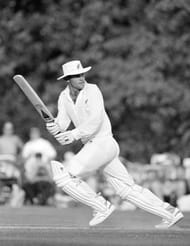
Martin Crowe was among the best batsmen of the 1980s. Technically accomplished and capable of dominating the best attacks of his days, he along with Richard Hadlee led New Zealand through their golden era in the middle 80s. The greatest attribute that Crowe possessed was a keen mind that constantly kept looking for avenues to improve. He modified his game to suit the opposition, and this combined with his technical superiority ensured that the right-hander was never really found wanting in any condition.
Crowe averaged 45 against the West Indies and 57 against Pakistan. Now, these are truly remarkable numbers when one considers the quality of bowling that West Indies and Pakistan were blessed with in the 1980s. His unflappable temperament and superb technique make him the ideal number 3 in this team.
#4 Kevin Pietersen
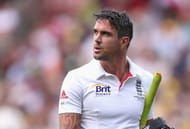
Rarely has a batsman walked the talk as emphatically as Kevin Pietersen did. He ranks among the most imposing personalities that cricket has seen after Viv Richards. He strutted to the crease like a king and played like a millionaire. There was no bowler that Pietersen could not master and no challenge that he could not achieve. If there was a weakness, it was only one brought about by his massive ego. His troubles against left-arm spin have been discussed for many years now. However, he has hundreds against India in Mumbai on a track that took turn from day1 (which included a memorable assault on Pragyan Ojha) and against Sri Lanka on a slow spinning track in Colombo.
He announced his arrival with a stunning Ashes-sealing 158 at the Oval in 2005, and the Aussies have been among his favourite opponents with several memorable innings against them in Test cricket. With the South African-born, the runs he made were just half of the story. His impact on the opposition was massive, and he almost always targeted the best in the world. Pietersen was at his best at the biggest stages and against the best bowlers. A most satisfactory number 4 indeed.
#5 Clive Lloyd
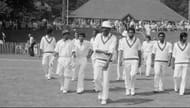
The Big Cat was the brains behind the great West Indian teams of the 1970s and 1980s. However, his achievements as a captain tend to overshadow the fact that he was a brilliant batsman. Tall, gangling and extremely powerful, Lloyd dominated bowlers like very few before him did. He was the fulcrum of the great West Indian middle order, and his brilliant batting rescued the Windies from disaster on innumerable occasions.
He was secure against pace and brutal against spin. He tamed the great Indian spinners of the 1970s by using his giant reach to sweep anything remotely on a length. He was probably the originator of the lofted slog sweep shot over deep midwicket. Against pace, he was a brutal puller and hooker and was secure against both seam and swing. This is reflected in his stellar records in England and Australia. He was also a brilliant fielder ar cover/point before injuring his back in 1977. He will be the man for a crisis in this team and also the captain to lead them forward
#6 Ian Botham
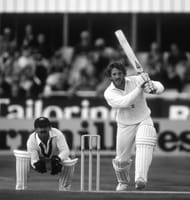
One of the greatest match-winners of all time with 14 centuries and 27 five-wicket hauls. A magnificient slip fielder and a truly a man for the big occasion.
Ian Botham was all that and a lot more. In his golden period from 1977 to 1984 , there was no more compelling cricketer to watch. His decline to a portly trundler capable of bowling medium pace and a rotund hitter often causes people to forget what Beefy was initially. He was a wonderfully uninhibited batsman capable of playing the mostly astonishing knocks against top quality attacks. His bowling had guile, swing and pace in ample proportions. More than that, he had that star quality about him. He could run through line-ups in the most unfavorable conditions and bash the most improbable hundred in adverse circumstances most nonchalantly. His style and charisma made him the most adored sportsman in Britain for decades.
Enough has been said about his Ashes exploits in 1981 or his golden jubilee Test of 1980. His first 40 Tests yielded 200 plus wickets at less than 20, and he averaged more than 40 then. The decline was painful to see. But that does not take anything away from Beefy’s achievements, and he will be the all-rounder in this team.
#7 Adam Gilchrist
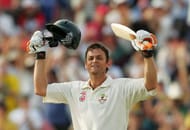
Now, this is an easy option. Let me not spend too much time justifying his selection. He was the man who redefined the role of a wicket-keeper in a Test match. Let the argument end there.
#8 Shane Warne
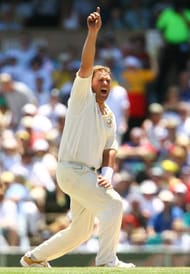
Another member of the pack whose selection is virtually a no-brainer. The fact that Warne averaged 25 plus may surprise a lot of people. But he suffered some serious maulings at the hands of the Indians (averaged 47 against India). But this does nothing to diminish his aura. His impact on the game and on the art of spin to be specific is just immeasurable. Like Adam Gilchrist, he is another person on whom the lesser said the better it is.
#9 Andy Roberts
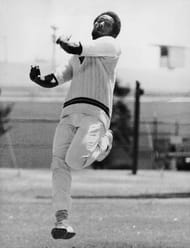
The leader of the Windies pace attack of the 70s and probably the smartest of them all, Roberts left behind a significant legacy when he retired. Always rated by Sunil Gavaskar as the best bowler he had ever faced, Roberts had the ability to prise out the best batsman in the opposition team. He had a deceptive change of pace and his faster bouncer left a lot of batsmen on the floor with a broken nose or a jaw. He bowled fast and was at his best in true wickets offering even bounce. Never a great swinger of the cricket ball, he developed an outstanding leg-cutter which bemused a lot of opponents. Roberts will be the attack leader of this team, as well.
#10 E.A.S.Prasanna
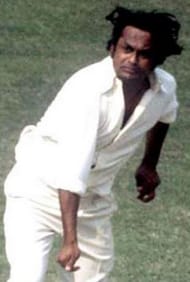
The greatest off spinner of them all will complement the greatest leggie of them all in a tantalising partnership. Pras was a fantastic bowler who believed in attacking the batsman continually. This probably explains his rather high bowling average. However, as the best batsmen of his time would say, the runs came at a price. The Karnataka-born was a master tactician who believed in loop, drift and turn and used them all to devastating effect.
Many a batsman groped foward to drive the apparent half volley only to find the ball dip on them alarmingly and go through the gate. Many a batsman went down to the slider only to find the ball drift away for the keeper to effect the coup de grace. He was at his best on true wickets, as he enjoyed the additional bounce they offered.
#11 Shoaib Akhtar
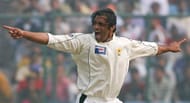
A long run-up culminating in a body crunching action to deliver the ball at a startling pace. Probably the fastest bowler of them all. Definitely one of the greatest entertainers fo them all. A man who removed Rahul Dravid and Sachin Tendulkar in successive deliveries of a Test match in Kolkata. A man who removed Mark and Steve Waugh in successive deliveries of a Test match in Sharjah.
The possessor of probably the most wicked slower ball of them all. Shoaib Akhtar was all that. Rarely has a bowler been involved in so many controversies. However, when he was fit and playing, he was among the best bowlers to have ever played the game. Blinding pace and wicked swing allied to blinding aggression resulted in a terrific bowler. He could bowl at 100 mph, and he could also bowl a slower delivery at 70 mph. He is probably the most unpredictable bowler in this team. However, he is also probably the most devastating of them all as well.
Follow IPL Auction 2025 Live Updates, News & Biddings at Sportskeeda. Get the fastest updates on Mega-Auction and cricket news
